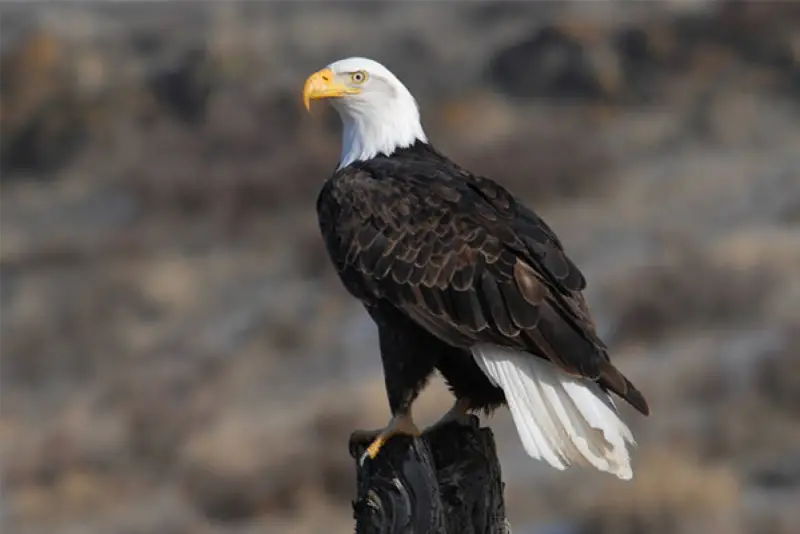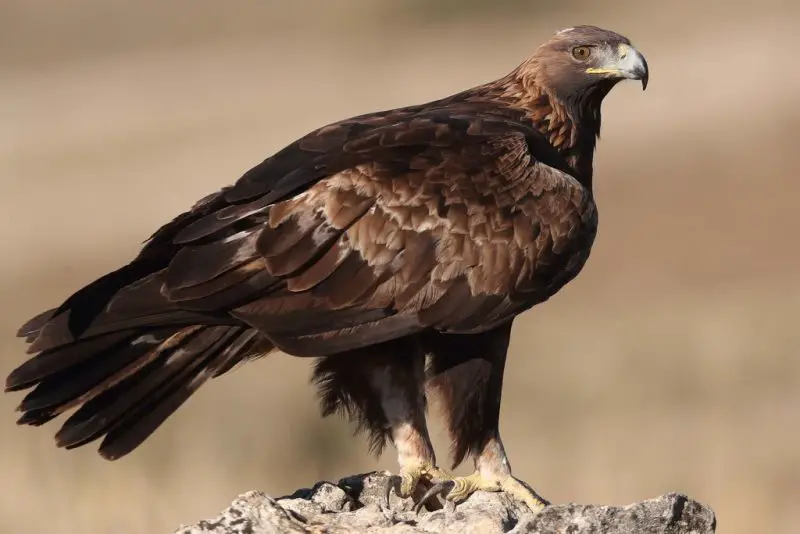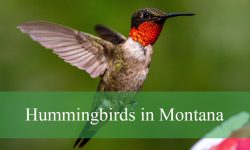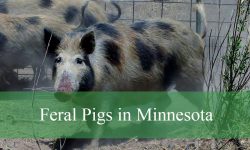New Mexico’s vast deserts, rugged mountains, and winding rivers make it one of the most breathtaking states in the Southwest for birdwatching. Among its most majestic inhabitants are eagles—powerful birds of prey that symbolize freedom and strength. While not as common as hawks or falcons, eagles can still be seen across the Land of Enchantment, soaring high above cliffs or perched along riverbanks scanning for prey.
In this guide, we’ll explore 3 types of eagles found in New Mexico—the Bald Eagle, the Golden Eagle, and the Steller’s Sea Eagle (a rare visitor). You’ll learn how to identify each species, where to find them, and what makes them such fascinating raptors in New Mexico’s diverse ecosystems.
Overview of Eagles in New Mexico
New Mexico’s diverse geography—ranging from high desert to alpine forest—creates ideal habitats for eagles throughout the year. While Golden Eagles are permanent residents, Bald Eagles primarily visit during the colder months. The Steller’s Sea Eagle, on the other hand, is a rare wanderer occasionally reported in the U.S., making any sighting a thrilling event for bird enthusiasts.
Eagles are apex predators known for their keen eyesight, immense wingspans, and strong hunting abilities. They prefer open landscapes with abundant prey, such as grasslands, reservoirs, or mountain ridges. Whether you’re a birdwatcher or nature photographer, spotting one of these magnificent raptors in New Mexico is an unforgettable experience.
Bald Eagle (Haliaeetus leucocephalus)

The Bald Eagle, the national bird and symbol of the United States, is one of the most striking species you can encounter in New Mexico. Recognized instantly by its white head and tail contrasting with a dark brown body, this eagle is a sight to behold against the state’s blue skies and desert backdrops.
Identification and Characteristics
Adult Bald Eagles measure 28 to 40 inches long with an impressive wingspan of up to 7.5 feet. Their large yellow hooked beak, white-feathered head, and bright yellow eyes make them unmistakable. Juveniles, however, are more challenging to identify, as they are entirely dark brown with irregular white mottling and take up to five years to develop their iconic plumage.
When flying, Bald Eagles soar with long, flat wings and steady, powerful beats. They are often seen gliding near lakes or perched high in cottonwood trees near water bodies.
Habitat and Range in New Mexico
In New Mexico, Bald Eagles are mainly winter visitors. They migrate from northern states and Canada to take advantage of the state’s mild winters and open water sources where fish remain accessible. Common wintering areas include:
- Bosque del Apache National Wildlife Refuge
- Elephant Butte Lake
- Abiquiu Reservoir
- Rio Grande Valley
Some pairs have begun nesting year-round in the state, particularly near large lakes and reservoirs where fish populations are healthy. Their enormous nests, called aeries, can be over 8 feet across and weigh several hundred pounds.
Diet and Behavior
Bald Eagles are primarily fish-eaters, skillfully swooping down to snatch fish near the water’s surface. However, they are opportunistic feeders and will also consume waterfowl, small mammals, and carrion. They are known for stealing prey from other birds, including ospreys—a behavior known as kleptoparasitism.
During winter, you may observe multiple Bald Eagles sharing the same area, particularly where food sources are abundant. Their haunting, high-pitched calls echo across New Mexico’s wetlands, adding to their majestic presence.
Conservation Status
Once endangered due to pesticide use and habitat loss, Bald Eagle populations have made an impressive recovery thanks to conservation efforts and the banning of DDT. Today, they are listed as Least Concern, though they remain protected under the Bald and Golden Eagle Protection Act.
Seeing a Bald Eagle in New Mexico is a symbol of hope and conservation success—a reminder that even the rarest species can rebound when given protection.
Golden Eagle (Aquila chrysaetos)

The Golden Eagle is the most widespread and powerful eagle in New Mexico. Unlike the Bald Eagle, it is a year-round resident, thriving in the state’s open landscapes from deserts to mountainous regions. Revered by Native American cultures and admired by birdwatchers, the Golden Eagle embodies the rugged spirit of New Mexico’s wilderness.
Identification and Characteristics
Golden Eagles are large, dark brown raptors with golden feathers on the back of the head and neck, giving them their name. Adults have long, broad wings and a long tail, while juveniles often display white patches at the base of the tail and under the wings.
They measure 30 to 40 inches in length, with wingspans up to 7.5 feet, rivaling the Bald Eagle in size. Their powerful talons, muscular legs, and hooked beak make them skilled hunters capable of subduing prey nearly their own size.
In flight, Golden Eagles soar with slightly upturned wings and a steady glide. They are often seen circling high above cliffs or mesas, scanning the terrain for movement below.
Habitat and Range in New Mexico
Golden Eagles prefer open and semi-open habitats—grasslands, desert plains, shrublands, and mountain foothills. They avoid heavily forested areas, instead choosing regions with abundant hunting opportunities and clear visibility.
Key areas to observe Golden Eagles in New Mexico include:
- Gila National Forest
- San Juan Basin
- Chihuahuan Desert region
- Sangre de Cristo Mountains
They typically nest on cliffs, ledges, or steep escarpments, using large sticks to build sturdy platforms. These nests can be reused and expanded over several years.
Diet and Hunting Behavior
Golden Eagles are renowned for their speed, power, and precision. Their diet mainly consists of small to medium-sized mammals—jackrabbits, prairie dogs, and ground squirrels being their primary prey. They also occasionally capture birds, reptiles, or carrion.
They hunt by soaring high and diving swiftly toward unsuspecting prey, reaching speeds over 150 miles per hour in a stoop. Their acute eyesight allows them to spot movement from miles away.
In New Mexico’s wide-open landscapes, Golden Eagles play a crucial ecological role by keeping rodent populations balanced, supporting the natural ecosystem.
Breeding and Lifespan
Golden Eagles form monogamous pairs that often mate for life. They defend large territories, sometimes exceeding 60 square miles. Breeding begins in late winter, with one to three eggs laid in early spring. The young fledge by late summer but may remain dependent for several weeks before dispersing.
With a lifespan of up to 30 years in the wild, Golden Eagles symbolize endurance and strength in New Mexico’s skies.
Steller’s Sea Eagle (Haliaeetus pelagicus)

While not a regular resident, the Steller’s Sea Eagle deserves mention as one of the most remarkable and rarest visitors ever reported in the United States—including the Southwest. Native to the coastal regions of Russia and Japan, this species has been recorded wandering thousands of miles from its range, astonishing birders when sighted.
Identification and Characteristics
The Steller’s Sea Eagle is among the largest eagles in the world, even larger than the Bald and Golden Eagles. Adults measure up to 3.5 feet in length with an 8 to 9-foot wingspan, and weigh up to 20 pounds. They have dark chocolate-brown bodies with bright white shoulders, tail, and thighs, and an enormous yellow beak.
This eagle’s striking coloration and massive build make it unmistakable. If ever seen in New Mexico, it would undoubtedly be a once-in-a-lifetime sighting for any birdwatcher.
Habitat and Behavior
In its native range, the Steller’s Sea Eagle prefers coastal cliffs, river mouths, and sea ice where it hunts fish and waterfowl. It is primarily a fish-eater, catching salmon and other large fish near the surface of the water. It also scavenges carrion and steals prey from other birds.
Though highly unlikely to reside in New Mexico permanently, vagrant individuals could theoretically appear near major reservoirs or during extreme weather patterns that push them off course. Such wanderings have occurred in other U.S. states, creating national headlines in the birding community.
Conservation Status
The Steller’s Sea Eagle is considered Vulnerable due to habitat loss, pollution, and declining fish stocks in its native regions. Conservation programs in Russia and Japan aim to protect nesting sites and sustain fish populations critical to their survival.
Even though New Mexico is far from its home range, the possibility of spotting one remains a thrilling dream for dedicated eagle watchers.
Where to See Eagles in New Mexico
New Mexico offers several prime birdwatching locations where eagle sightings are possible, particularly in winter months. Below are some of the best spots:
Bosque del Apache National Wildlife Refuge
Perhaps the most famous birding site in New Mexico, this refuge attracts large numbers of Bald Eagles each winter. The combination of wetlands, open water, and thousands of migratory birds makes it a raptor paradise.
Elephant Butte Lake
New Mexico’s largest reservoir provides ideal conditions for Bald Eagles. Look for them perched along shorelines or soaring over open water in search of fish.
Valle de Oro National Wildlife Refuge
Located near Albuquerque, this refuge hosts both Bald and Golden Eagles, especially during winter. It’s a convenient destination for birdwatchers close to the city.
Gila National Forest
A stronghold for Golden Eagles, the forest’s rugged canyons and high plateaus offer excellent nesting and hunting areas.
San Juan Basin
Expansive grasslands and mesas in this region make it a reliable location for spotting Golden Eagles year-round.
When to See Eagles in New Mexico
- Bald Eagles: Most common from November through March, when they migrate south for winter feeding grounds.
- Golden Eagles: Year-round residents, most active during breeding season from late winter to spring.
- Steller’s Sea Eagle: Extremely rare—possible during winter months as a wandering vagrant, though sightings are exceptional.
How to Identify Eagles vs. Other Large Birds
Eagles can sometimes be confused with hawks, vultures, or ospreys, but a few key features can help you distinguish them:
- Size: Eagles are much larger with broader wings and heavier builds.
- Flight pattern: Eagles soar with steady, shallow wingbeats, unlike vultures that teeter or hawks that flap more frequently.
- Head shape: Eagles have larger heads and more pronounced beaks.
- Habitat: Bald Eagles stay near water; Golden Eagles prefer open land and mountains.
Bringing a pair of binoculars or a spotting scope enhances your chances of a good sighting, especially in open areas or during early morning hours when raptors are most active.
Eagles and New Mexico’s Ecosystem
Eagles play an important role in maintaining ecological balance. As top predators, they regulate populations of rodents, fish, and other small animals. By scavenging carrion, they also help reduce disease spread in ecosystems.
Their presence also reflects the health of the environment—clean rivers and lakes are essential for Bald Eagles, while expansive natural landscapes sustain Golden Eagles. Efforts to conserve these habitats benefit countless other wildlife species in New Mexico.
Eagle Protection Laws in New Mexico
Both Bald and Golden Eagles are protected by federal law under:
- The Bald and Golden Eagle Protection Act (1940)
- The Migratory Bird Treaty Act
These laws make it illegal to harm, capture, or disturb eagles, their nests, or eggs without a special permit. Violations can result in severe penalties, including fines and imprisonment.
New Mexico’s wildlife agencies and local conservation groups work to monitor eagle populations and protect their nesting sites, especially in high-traffic recreational areas.
Interesting Facts About Eagles in New Mexico
- A Golden Eagle’s eyesight is estimated to be eight times stronger than a human’s, allowing it to spot prey from over two miles away.
- Bald Eagles can lift up to 4 pounds, but often drop heavier fish mid-flight.
- Golden Eagles can dive at speeds exceeding 150 miles per hour—almost as fast as a peregrine falcon.
- Bald Eagle pairs reuse the same nest year after year, making some nests weigh over a ton after several seasons.
- The oldest recorded Bald Eagle in the wild lived to be 38 years old.
FAQs About Eagles in New Mexico
What is the most common eagle in New Mexico?
The Golden Eagle is the most common and widespread species, found year-round across open deserts, mountains, and grasslands.
Do Bald Eagles nest in New Mexico?
Yes, although most are winter visitors, a few resident pairs nest near lakes and reservoirs like Elephant Butte and Heron Lake.
Where can I photograph eagles in New Mexico?
Top locations include Bosque del Apache, Elephant Butte Lake, and Gila National Forest—especially early in the morning when light conditions are ideal.
Are Golden Eagles protected in New Mexico?
Yes. Both Bald and Golden Eagles are fully protected under federal law, prohibiting harassment, harm, or nest disturbance.
What do eagles eat in New Mexico?
Golden Eagles mainly hunt small mammals, while Bald Eagles prefer fish and waterfowl. Both will scavenge carrion when available.
Conclusion
New Mexico’s eagles represent the wild spirit of the Southwest—majestic, fierce, and deeply connected to the landscape. Whether you witness a Bald Eagle soaring over a reservoir or a Golden Eagle gliding across the desert, these birds inspire awe and remind us of the importance of conserving their habitats.
With ongoing protection and responsible stewardship, New Mexico will continue to be a haven for these magnificent raptors for generations to come.






